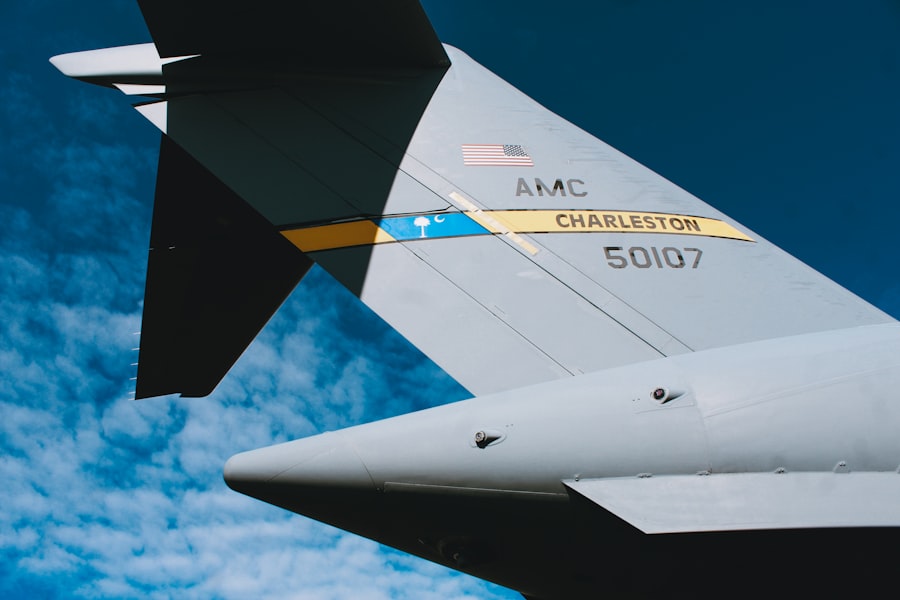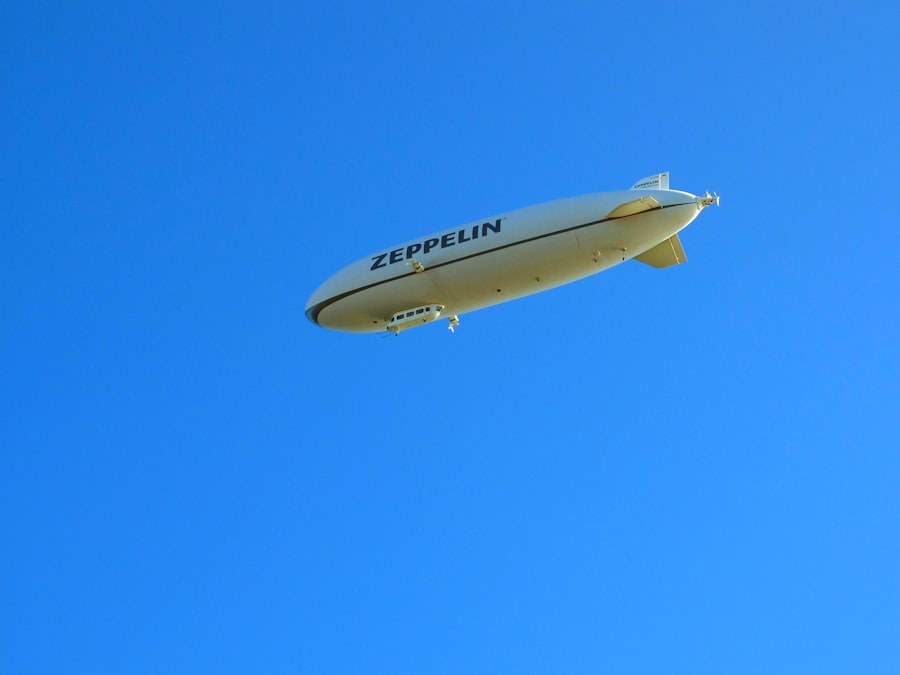Aerospace technology encompasses a broad spectrum of engineering disciplines and scientific principles that are essential for the design, development, and operation of aircraft and spacecraft. This field integrates various domains, including aerodynamics, materials science, propulsion systems, avionics, and systems engineering, to create vehicles capable of navigating through the Earth’s atmosphere and beyond. The significance of aerospace technology extends beyond mere transportation; it plays a crucial role in national defense, global communications, weather forecasting, and scientific research.
As the world becomes increasingly interconnected, the advancements in aerospace technology continue to shape our understanding of the universe and enhance our daily lives. The aerospace sector is characterized by its rapid pace of innovation and its reliance on cutting-edge research. From the Wright brothers’ first powered flight in 1903 to the sophisticated spacecraft exploring distant planets today, the journey of aerospace technology is marked by milestones that have transformed human capabilities.
The interplay between theoretical research and practical application has led to breakthroughs that not only improve flight safety and efficiency but also expand the horizons of what is possible in air and space travel. As we delve deeper into the evolution of this field, it becomes evident that aerospace technology is not just about machines; it is about pushing the boundaries of human ingenuity.
Key Takeaways
- Aerospace technology encompasses the development and application of technology in the field of aviation and space exploration.
- The evolution of aerospace technology has led to significant advancements in aircraft design and engineering, resulting in safer and more efficient aircraft.
- Aerospace technology plays a crucial role in space exploration, enabling the development of spacecraft and technologies for exploring the universe.
- The impact of aerospace technology on commercial aviation has led to the globalization of air travel and the development of more fuel-efficient and environmentally friendly aircraft.
- The future of aerospace technology presents both innovations and challenges, including the development of supersonic and hypersonic aircraft, as well as addressing environmental considerations and global collaboration and competition.
The Evolution of Aerospace Technology
The evolution of aerospace technology can be traced back to ancient civilizations that dreamed of flight. Early attempts at aviation included the use of kites and gliders, but it wasn’t until the late 19th and early 20th centuries that significant progress was made. The invention of the internal combustion engine provided the necessary power for heavier-than-air flight, culminating in the historic flight of the Wright brothers.
This pivotal moment marked the beginning of a new era in transportation, leading to rapid advancements in aircraft design and engineering. Following World War I, the aerospace industry experienced a surge in innovation driven by military needs and commercial interests. The introduction of metal airframes, more powerful engines, and advanced aerodynamic designs revolutionized aircraft performance.
The interwar period saw the emergence of commercial aviation, with airlines beginning to offer passenger services. By World War II, technological advancements had accelerated dramatically, resulting in faster, more maneuverable aircraft equipped with advanced weaponry. The post-war era ushered in a new age of jet travel, with commercial jets like the Boeing 707 transforming air travel into a mass-market phenomenon.
Advancements in Aircraft Design and Engineering

The advancements in aircraft design and engineering have been pivotal in enhancing performance, safety, and efficiency. One significant development has been the shift from traditional materials to advanced composites. Modern aircraft often utilize carbon-fiber-reinforced polymers, which offer a superior strength-to-weight ratio compared to aluminum.
This shift not only reduces overall weight but also improves fuel efficiency, allowing airlines to operate more economically while minimizing their environmental footprint. Aerodynamics has also seen remarkable progress, with computational fluid dynamics (CFD) playing a crucial role in optimizing aircraft shapes. Engineers can now simulate airflow over various designs before physical prototypes are built, significantly reducing development time and costs.
Innovations such as winglets—small vertical extensions at the tips of wings—have been implemented to reduce drag and improve fuel efficiency further. Additionally, advancements in engine technology, including high-bypass turbofan engines, have contributed to quieter operations and lower emissions, aligning with global sustainability goals.
The Role of Aerospace Technology in Space Exploration
| Metrics | Data |
|---|---|
| Number of Satellites Launched | Over 9,000 satellites have been launched into space since the beginning of the space age. |
| Distance Traveled by Spacecraft | The Voyager 1 spacecraft has traveled over 14 billion miles from Earth. |
| International Space Station (ISS) Duration | The ISS has been continuously inhabited since November 2000. |
| Exploration of Other Planets | Various spacecraft have been sent to explore Mars, Venus, and other planets in our solar system. |
Aerospace technology has been instrumental in expanding our understanding of space through exploration missions that push the boundaries of human knowledge. The launch of Sputnik by the Soviet Union in 1957 marked humanity’s first foray into space, igniting a race that would lead to numerous groundbreaking missions. NASA’s Apollo program culminated in the historic moon landing in 1969, showcasing the potential of aerospace technology to achieve extraordinary feats.
In recent years, advancements in aerospace technology have enabled more ambitious missions beyond Earth’s orbit. The Mars rovers, such as Curiosity and Perseverance, are equipped with sophisticated instruments that analyze soil samples and search for signs of past life on the Red Planet. These missions rely on cutting-edge robotics and autonomous systems that allow them to operate independently in harsh environments.
Furthermore, private companies like SpaceX have revolutionized space travel with reusable rocket technology, significantly reducing costs and paving the way for future exploration endeavors.
The Impact of Aerospace Technology on Commercial Aviation
The impact of aerospace technology on commercial aviation is profound and multifaceted. The introduction of jet engines revolutionized air travel by drastically reducing flight times and expanding global connectivity. Aircraft such as the Boeing 747 made long-haul flights accessible to millions, transforming international travel into a commonplace experience.
The efficiency gains achieved through technological advancements have allowed airlines to offer competitive pricing while maintaining safety standards. Moreover, modern avionics systems have enhanced navigation and communication capabilities within commercial aviation. Advanced cockpit technologies such as fly-by-wire systems provide pilots with improved control over aircraft operations while reducing pilot workload.
Additionally, satellite-based navigation systems like GPS have revolutionized air traffic management by enabling more precise routing and reducing delays. These innovations not only enhance passenger experience but also contribute to overall operational efficiency within the aviation industry.
The Future of Aerospace Technology: Innovations and Challenges

As we look toward the future of aerospace technology, several innovations are on the horizon that promise to reshape the industry further. One area garnering significant attention is urban air mobility (UAM), which envisions a network of electric vertical takeoff and landing (eVTOL) aircraft designed for short-distance travel within urban environments. Companies are actively developing prototypes that could alleviate traffic congestion while providing an alternative mode of transportation for city dwellers.
However, these advancements come with challenges that must be addressed to ensure safe integration into existing airspace systems. Regulatory frameworks will need to evolve to accommodate new aircraft types and operational paradigms while maintaining safety standards. Additionally, public acceptance will play a crucial role in determining the success of UAM initiatives.
As these technologies develop, collaboration between industry stakeholders, regulatory bodies, and communities will be essential to navigate the complexities associated with their implementation.
Environmental Considerations in Aerospace Technology
Environmental considerations are becoming increasingly critical within aerospace technology as concerns about climate change intensify. The aviation industry is under pressure to reduce its carbon footprint while meeting growing demand for air travel. Innovations aimed at improving fuel efficiency are essential; however, there is also a push toward alternative fuels such as sustainable aviation fuel (SAF).
SAF can significantly reduce greenhouse gas emissions compared to traditional jet fuels when produced from renewable sources. In addition to fuel alternatives, research is ongoing into electric propulsion systems that could revolutionize short-haul flights. Electric aircraft have the potential to eliminate emissions during flight entirely; however, challenges remain regarding battery technology and energy density.
Furthermore, noise pollution is another environmental concern that aerospace engineers are addressing through quieter engine designs and improved aerodynamics. As regulatory bodies implement stricter environmental standards, the aerospace industry must adapt by investing in sustainable technologies that align with global climate goals.
The Global Reach of Aerospace Technology: International Collaboration and Competition
The global nature of aerospace technology fosters both collaboration and competition among nations and companies alike. International partnerships have been instrumental in advancing space exploration efforts; for instance, the International Space Station (ISS) represents a collaborative endeavor involving multiple countries working together toward common scientific goals. Such collaborations leverage diverse expertise and resources while promoting peaceful uses of outer space.
On the other hand, competition within the aerospace sector drives innovation as companies strive to outperform one another in terms of performance, cost-effectiveness, and technological advancements. Nations invest heavily in their aerospace industries to secure strategic advantages in defense capabilities and economic growth. This competitive landscape has led to significant investments in research and development as countries seek to establish themselves as leaders in emerging technologies such as hypersonic flight or satellite communications.
The interplay between collaboration and competition shapes the future trajectory of aerospace technology as stakeholders navigate complex geopolitical landscapes while striving for technological supremacy. As we continue to explore new frontiers in air and space travel, it is clear that aerospace technology will remain at the forefront of human achievement for generations to come.


